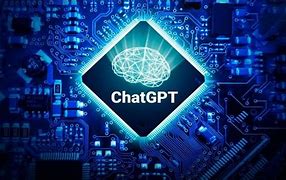Chat GPT Unpacked: What’s Hiding Behind Those Four Letters?
(What Does Chat Gpt Stand For)
Imagine asking a robot to write a poem, solve a math problem, or explain quantum physics in plain English. Odds are, you’ve already met ChatGPT—the AI tool that feels like a Swiss Army knife for words. But what does “Chat GPT” actually mean? Let’s crack open the acronym and see what makes this tech tick.
First, “Chat” is easy. It’s short for “chatting,” right? Think of it like texting a friend who knows everything. You type a question, it types back. Simple. But the magic is in the “GPT” part. Those three letters hold the key to why this tool can chat like a human, brainstorm ideas, or even mimic your writing style.
GPT stands for “Generative Pre-trained Transformer.” Let’s break that down. “Generative” means it creates stuff. Unlike a search engine that digs up existing info, GPT generates new text on the fly. Ask it to write a joke about robots, and it cooks one up instantly. No copying, no pasting—just fresh words.
Next up: “Pre-trained.” Before ChatGPT ever chatted with you, it studied. A lot. Picture it reading millions of books, websites, and articles. It didn’t just skim. It analyzed patterns—how sentences connect, which words follow others, even the rhythm of jokes versus scientific reports. This training lets it guess what word should come next, like a supercharged version of your phone’s keyboard suggestions.
Now, the juiciest part: “Transformer.” No, this isn’t a robot that turns into a truck. In tech terms, a transformer is a type of neural network—a system modeled loosely on the human brain. Transformers are good at spotting relationships in data. For example, in the sentence “The cat chased its tail because it was bored,” a transformer figures out that “it” refers to the cat, not the tail. This helps GPT understand context, making its replies feel less robotic.
Putting it all together, ChatGPT is a pre-trained, generative machine that transforms your prompts into coherent answers. But here’s the kicker: it doesn’t “know” anything. It’s not sitting there pondering life. It’s predicting words based on patterns. Ask it about the moon landing, and it stitches together sentences from things it’s seen before. The result? Answers that sound smart, even if the AI has no clue what “Apollo 11” really means.
Why does this matter? Because GPT’s design explains both its brilliance and its blunders. It can write a Shakespearean sonnet about pizza but might also invent fake facts. It’s creative but not critical. It mimics logic without understanding it. That’s why humans still need to fact-check its work.
You might wonder how GPT-4 or future versions will improve. More training data? Better transformers? Maybe. But the core idea stays the same: a chatbot that learns from heaps of text, then generates replies word by word. It’s not magic—just math, data, and clever coding.
Still, the “chat” part is what hooks people. It feels natural. You don’t need to speak code or press buttons. Type like you’re talking to a person, and it responds in kind. This ease of use is why teachers, programmers, marketers, and even kids use ChatGPT daily.
(What Does Chat Gpt Stand For)
So next time you ask it for help, remember: those four letters—“GPT”—are doing heavy lifting. They’re why it can draft an email, summarize a report, or debate the best pizza toppings. It’s not sentient. It’s not perfect. But it’s a tool that’s redefining how we interact with machines, one conversation at a time.
Inquiry us
if you want to want to know more, please feel free to contact us. (nanotrun@yahoo.com)




